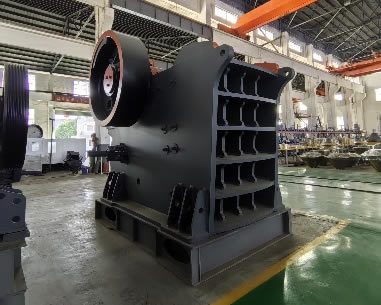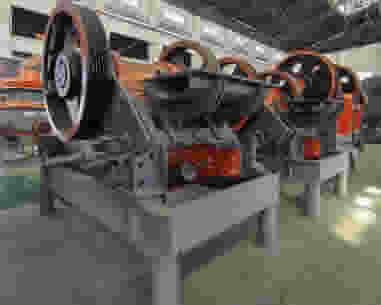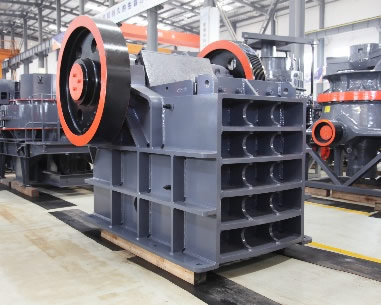
Solutions for Jaw Crusher Problems
-
Production Capacity:
30-400t/h
-
Applicable Industries:
aggregate production, construction material recycling, and mining operations.
-
Power:
5.5-110kw
-
Core Components:
Crankshaft maintenance access. Centralised lubrication system.
-
Place of Origin:
Henan, China
- Product Details
- Characteristics
- Working Principle and Application
- Parameters
Jaw crusher is mainly used for medium-sized crushing of various ores and bulk materials. It is widely used in mining, smelting, building materials, highways, railways, water conservancy and chemical industries. The maximum compressive strength of the crushed material is 320MPa. The performance characteristics are large crushing ratio, uniform product particle size, simple structure, reliable performance, easy maintenance and low operating cost. The working environment of jaw crusher is harsh, and various faults often occur during operation. In order to ensure the stable operation of the equipment and improve the performance of the equipment, it is particularly important to do a good job of daily maintenance of the jaw crusher!
Due to the high working intensity of jaw crushers, the materials being crushed are often hard and large, and the working environment can be challenging. Long-term use inevitably leads to failures. Quickly and effectively solving these issues is crucial. Here are some common faults of jaw crushers and their solutions. You can make a preliminary judgment and address these yourself, or contact the engineers at Zhongcheng Company:
Common Issues and Solutions:
Due to the high working intensity of jaw crushers, the materials being crushed are often hard and large, and the working environment can be challenging. Long-term use inevitably leads to failures. Quickly and effectively solving these issues is crucial. Here are some common faults of jaw crushers and their solutions. You can make a preliminary judgment and address these yourself, or contact the engineers at Zhongcheng Company:
01 The Main Machine Suddenly Stops
1. Clear the blockage at the discharge port to ensure smooth discharge.
2. Tighten or replace the triangular belt.
3. Reinstall or replace the fixing bushing.
4. Adjust the voltage to meet the requirements of the main machine.
5. Replace the bearing.
02 The Main Machine Sheave and Movable Jaw Operate Normally, but Crushing Stops
1. Replace the tension spring.
2. Replace the pull rod.
3. Reinstall or replace the toggle plate.
03 The Output Does Not Meet Factory Standards
1. Replace the crusher.
2. Change the wiring of the motor.
3. Adjust the discharge port to the size specified in the manual, or add a crusher for fine crushing.
4. Check the tooth pitch size of the tooth plate; replace the jaw plate if necessary. Adjust the relative position of the fixed and movable jaw plates, and secure them after aligning the tooth tops and roots.
5. Increase the voltage to meet the heavy load requirements.
6. Replace the bearing and movable jaw.
04 Beating or Impact Sound from Movable and Fixed Jaw Plates
1. Tighten or replace the bolts.
2. Adjust the discharge port to ensure the correct gap between the two jaw plates.
05 Eccentric Shaft Bending or Breaking
1. Replace the eccentric shaft and correctly hoist the main engine.
2. Select the appropriate crusher for the material's compressive strength.
3. Adjust the operating load or replace the crusher.
4. Use toggle plates and pads that meet design standards.
5. Replace the properly heat-treated eccentric shaft.
06 Broken Movable Jaw
1. Replace the movable jaw.
2. Use the original toggle plates and pads from the manufacturer.
3. Correctly assemble the eccentric shaft, bearings, bushings, and movable jaw, replacing damaged parts as needed.
4. Replace the pull rod spring.
5. Adjust the discharge port size as required.
6. Add a feed hopper to ensure even and smooth discharge, dividing material from the center to both sides.
07 High Temperature in Frame Bearing Seat or Movable Jaw
1. Add oil as specified in the manual.
2. Clean the oil hole and tank.
3. Adjust the position of the flywheel counterweight.
4. Tighten the fixing bushing.
5. Replace the bearing.
6. Replace the end cover and sealing sleeve, or adjust the bearing cover.
08 Flywheel Axial Swing
1. Replace the worn flat key, eccentric shaft, or flywheel.
2. Add a flywheel protective cover.
3. Replace the flywheel.
4. Re-tighten the expansion sleeve.
09 Knocking Sound at the Rear of the Frame
1. Tighten the tie rod.
2. Replace the spring if it fails, and re-tighten the tie rod.
3. Properly install the spring seat and tighten the tie rod nut.
4. Check the liner tightness and the gap between the hammer and liner.
5. Replace broken parts.
10 Severe Frame Jump
1. Tighten or replace broken anchor bolts.
2. Adjust the flywheel counterweight block and tighten the expansion sleeve bolts.
3. Strengthen the foundation with additional support.
11 Bearing Temperature Exceeds Allowable Value, Return Oil Temperature Over 60°C
1. Adjust the bearing shell tightness with gaskets.
2. Increase lubricating oil, clean the oil groove, and replace oil.
3. Re-scrape the bearing.
4. Check the cooling system.
12 High Water Temperature from Cooler (>45°C)
1. Increase the cooling system water supply and clean the system.
2. Check and repair bearings.
13 No Oil Flow Indicator
1. Check and repair or replace the oil pump.
2. Heat the oil appropriately.
3. Ensure the switch gate valve is open.
4. Clean and clear the pipeline.
14 Water in Oil System
1. Maintain cooling water pressure about 50 kPa lower than oil pipe pressure.
2. Check and repair leaks.
15 Shaking and Metal Impact Sound in Crushing Jaw Plate
1. Stop operation, check and tighten fixing screws.
2. Repair or reapply the liner.
3. Adjust the wedge.
16 Impact Sound from Thrust Plate Support
1. Adjust spring tension, replace spring and support pad.
2. Tighten the nut and adjust tightness.
17 Increased Crushed Product Particle Size
Cause: Significant wear on the lower part of the tooth plate. Solution: Rotate the tooth plate 180° or adjust the discharge port size.
18 Flywheel Rotates, Crusher Stops Working, Thrust Plate Falls Off
Cause: Damaged spring, pull rod, or loose pull rod nut. Solution: Check and replace damaged parts, and install the thrust plate.
19 Obvious Flywheel Swing, Slow Eccentric Shaft Rotation
Cause: Loose or damaged pulley and flywheel keys. Solution: Stop running, repair the keyway, and replace the key.
20 Crushing Chamber Blockage, High Main Motor Current
1. Discharge large material pieces after stopping.
2. Stop feeding and fix the belt conveyor issue, avoiding crusher stoppage if possible.
3. Stop feeding and clear the discharge port.
4. Slow feeder speed and reduce feeding amount.
-
01Jaw crushers produce minimal noise and dust emissions, reducing their environmental footprint compared to some other crushing equipment.
-
02Modern jaw crushers are equipped with safety features such as hydraulic toggle cylinders and automatic overload protection systems, enhancing operator safety.
-
03Compared to other types of crushers, jaw crushers often offer lower operating costs due to their efficient design and reduced wear on components.
-
04Durability: They are built with rugged construction and durable components, ensuring a long lifespan and minimal maintenance requirements.
Feed Hopper: The large opening at the top of the crusher allows for easy feeding of rock or ore into the crushing chamber.
Crushing Chamber: The movable jaw moves back and forth, creating a compressive force on the rock or ore, crushing it against the fixed jaw.
Adjustment Mechanism: The gap between the fixed jaw and the movable jaw can be adjusted to control the size of the crushed material. This adjustment is typically achieved by a hydraulic system or manually through a wedge mechanism.
Eccentric Shaft and Bearings: The eccentric shaft rotates, causing the movable jaw to move in a reciprocating motion. Bearings support the eccentric shaft and facilitate smooth operation.
Toggle Plate: The toggle plate serves as a safety mechanism by transmitting the compressive force from the movable jaw to the toggle and back, protecting the crusher from overload situations.
Drive System: The power source, typically an electric motor or diesel engine, drives the eccentric shaft, enabling the movement of the jaw.
Discharge Opening: The crushed material exits the crushing chamber through the discharge opening at the bottom of the crusher, allowing for the desired size of the crushed product to be achieved.
| Model | Feeding port size (mm) | Max feeing Size(mm) | Discharging size(mm) | Capacity (t/h) | Power (kw) | Weight (t) | Size (mm) |
| PE250×400 | 400×250 | 200 | 20-50 | 5-20 | 15 | 3 | 1430×1310×1340 |
| PE400×600 | 400×600 | 350 | 40-100 | 15-60 | 30-37 | 7 | 1700×1732×1653 |
| PE500×750 | 500×750 | 425 | 50-100 | 40-110 | 45-55 | 12 | 2035×1921×2000 |
| PE600×900 | 600×900 | 480 | 65-160 | 90-180 | 55-75 | 17 | 2290×2206×2370 |
| PE750×1060 | 750×1060 | 630 | 80-140 | 110-320 | 90-110 | 29 | 2655×2302×3110 |
| PE900×1200 | 900×1200 | 750 | 95-165 | 220-450 | 110-132 | 58 | 3800×3166×3045 |
| PE1000×1200 | 1000×1200 | 850 | 200-300 | 280-560 | 110-160 | 69 | 5350×4280×3050 |
| PE1200×1500 | 1200×1500 | 1020 | 150-300 | 400-800 | 160-220 | 100.9 | 6380×5310×3710 |
| PE1500×1800 | 1500×1800 | 1200 | 210-360 | 520-1100 | 280 | 132 | 7460×6235×4249 |
| PEX150×250 | 150×250 | 125 | 10-40 | 1-3 | 5.5 | 1.5 | 896×745×935 |
| PEX150×750 | 150×750 | 125 | 18-48 | 5-16 | 15 | 3.8 | 1200×1500×1200 |
| PEX250×750 | 250×750 | 210 | 25-60 | 15-30 | 22-30 | 5 | 1667×1545×1020 |
| PEX250×1000 | 250×1000 | 210 | 25-60 | 15-50 | 30-37 | 7 | 1550×1964×1380 |
| PEX250×1200 | 250×1200 | 210 | 25-60 | 20-60 | 37-45 | 8.5 | 2192×1900×1950 |
| PEX300×1300 | 300×1300 | 250 | 20-90 | 30-90 | 55-75 |
-
 Solutions for Jaw Crusher ProblemsJaw crusher is widely used in mining, smelting, building materials, highways, railways, water conservancy and chemical industries. The maximum compressive stren...Get Quote
Solutions for Jaw Crusher ProblemsJaw crusher is widely used in mining, smelting, building materials, highways, railways, water conservancy and chemical industries. The maximum compressive stren...Get Quote -
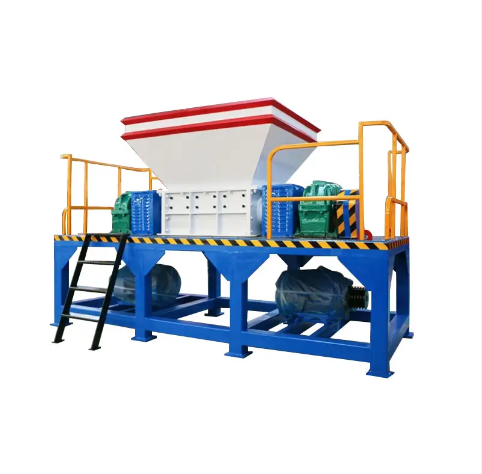 Crush to Create: The Ultimate Eco-Friendly Plastic Shredder RevolutionThe working principle of a plastic shredder is mainly to tear large plastic materials into small pieces or fragments through mechanical force, in order to facil...Get Quote
Crush to Create: The Ultimate Eco-Friendly Plastic Shredder RevolutionThe working principle of a plastic shredder is mainly to tear large plastic materials into small pieces or fragments through mechanical force, in order to facil...Get Quote -
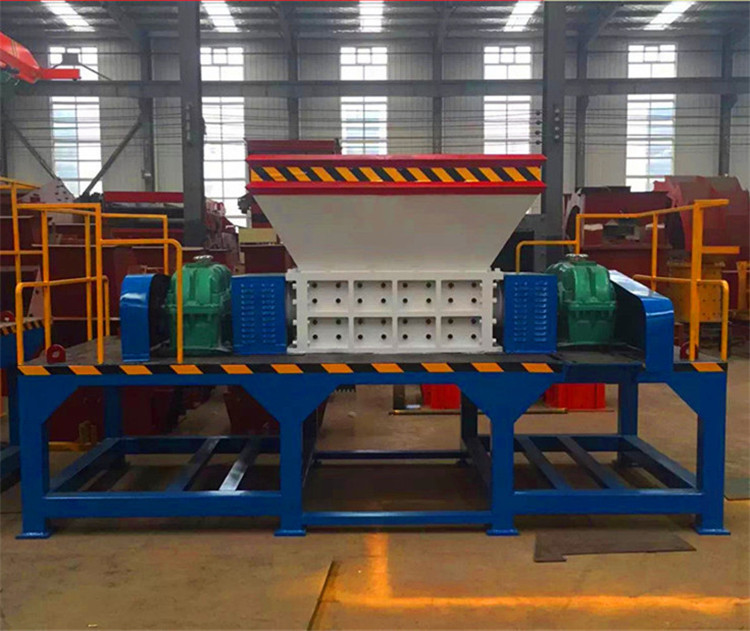 Medical waste shredderWorking Principle:Feeding Mechanism: Medical waste is fed into the shredder through a hopper or chute. The feeding mechanism ensures that the waste is introduce...Get Quote
Medical waste shredderWorking Principle:Feeding Mechanism: Medical waste is fed into the shredder through a hopper or chute. The feeding mechanism ensures that the waste is introduce...Get Quote -
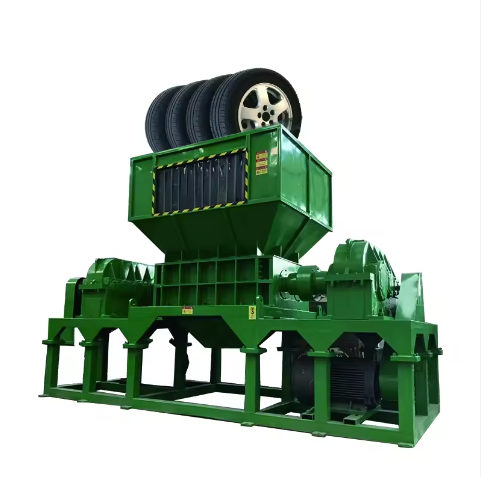 Tire double shaft shredderOperation:Feeding: Whole or pre-cut tires are fed into the shredder through an inlet hopper.Shredding: As the tires enter the shredding chamber, the rotating cu...Get Quote
Tire double shaft shredderOperation:Feeding: Whole or pre-cut tires are fed into the shredder through an inlet hopper.Shredding: As the tires enter the shredding chamber, the rotating cu...Get Quote


